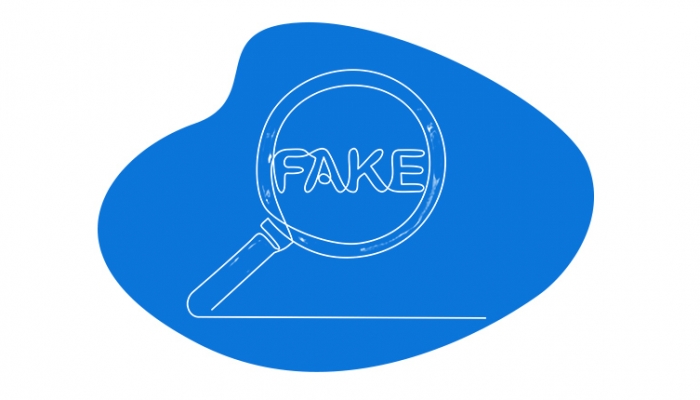The fight against fake news is not lost: How PRs can combat misinformation and disinformation
‘I don’t think we’re in a post-truth world yet, but we need to act now to avoid that worst-case scenario,’ believes Polis Analysis CEO and Founder Thomas Barton.
In our webinar ‘Why we need to take online misinformation and disinformation seriously’, Thomas shared the problems we face as a society with fake news, predictions for how it could impact politics, business and health, and the vital role of PR practitioners in the fight for truth.
Watch the full webinar here.
What can PRs do to fight misinformation, disinformation and fake news?
1) Report misinformation whenever you see it
This isn’t about surveillance mindset – this is simply about protecting the health of our public debate and discussion. Just as you would point out incorrect information around the table at the pub, you should feel a responsibility to call out something that could undermine trust online.
This is about proactively taking action to have content taken down when you come across information that’s untrue.
It’s important to remember this isn’t about undermining free speech – it’s about preserving the quality of our free speech. That means any discussion we’re having should be rooted in the facts.
2) If a client mistakenly shares misinformation, speak up quickly
As we know, content spreads fast. False information being shared on social media for a couple of hours is all it takes to have a pernicious effect on misinforming individuals. The best thing a PR professional can do in this situation is to flag that false information has been published, take it down, and then ensure the company or client understands to be more rigorous with its fact-checking before publishing anything.
We all have a responsibility to ensure that we fully understand what we’re publishing and that it’s based on facts when we put content online.
For more on how to handle a PR problem spreading across social media and in the press, check out advice from our previous webinar ‘Should you speak up or shut down in a PR crisis?’.
3) Challenge trusted institutions and authorities when necessary
We all have a responsibility to raise concerns even about a trusted organisation.
This is where legislative solutions are useful. If you’ve got an institution of a certain size, with a certain platform, something like the Online Safety Bill could provide an opportunity to ensure they abide by the same duty of balance as traditional broadcasters.
That combination of a top-down legislative and bottom-up educational approach in media literacy is crucial.
4) Recognise the risks emerging technologies bring
Technology, by definition, is disruptive; it’s always going to be a double-edged sword. Advances in AI are welcome and can bring all sorts of efficiencies to various industries, including PR and journalism. But there are risks involved.
Malicious actors could run misinformation campaigns by using software like ChatGPT to pump out deliberately false information across social channels. Spreading misinformation was an issuebefore AI, but the problem we face now is the increase in proliferation across the online space.
5) Back calls for extra accountability from social media giants
There has been a shift in accountability from social media companies recently, and that’s because they have done little-to-nothing for a long time in this space. Pushes from regulators and political institutions mean these social giants are now taking more ‘voluntary’ action.
The European Union passed the Digital Services Act (DSA), which compels social media companies to provide more transparency on how their algorithms work – the EU has shown that it’s willing to take steps. But despite this, the big social media companies aren’t taking it seriously enough.
This Wild West approach where we have no regulation and anything goes is simply not sustainable – legislation is necessary for these companies to take their responsibilities seriously.
6) Train new PR recruits to question content
There are workshops out there – from The Guardian and The Times, for example – on how to identify content that’s false and misleading, instilling more general critical thinking skills. Other resources can show you the difference between a headline that’s fake or true; how you can look at the originality of sources; how to do a reverse image search if you’ve got a doctored image; and determining the intent of the source. This is all housekeeping and hygiene practices we can instill in those early in their career.
Our focus is on education right now, because if those in school can develop their critical thinking skills, they’ll be better equipped to deal with these challenges at work. But we need to think about bringing these resources into current workforce environments, too.
7) Remember we aren’t in a post-truth world yet
There are people that have already succumbed to their echo chambers and only read content that re-enforces their own existing biases, but the fight is not lost.
There’s still an opportunity to fight false information with the facts – the problem is that we haven’t taken any action yet.
UK Prime Minister Rishi Sunak always talks about the importance of teaching Maths– really, we should be talking about the importance of digital literacy.
The US government is preparing for a polarised society in 15 to 20 years, so we still have some time to deal with this problem. But we must act fast to fight back and take the necessary action now.
For more on Thomas Barton’s work with Polis Analysis, read our previous interview ‘The fight against misinformation, disinformation and fake news is just beginning’.
Find out how big brands including Coca-Cola, FIFA, and British Airways have dealt with PR crises in our webinar ‘Speak up or shut down: The value of proactive PR in a crisis’ and track your own company and clients’ reputations in the press with Vuelio Media Monitoring.








Leave a Comment